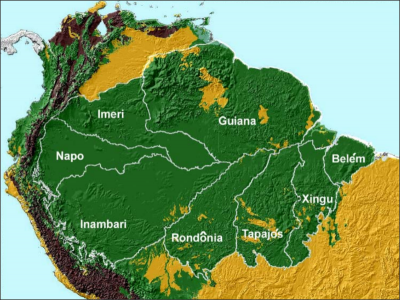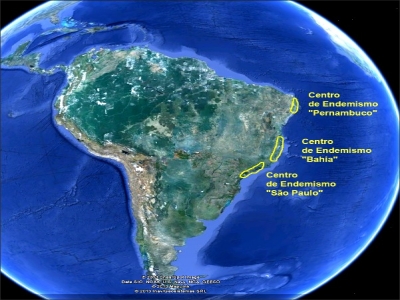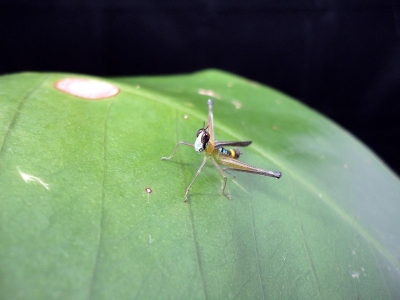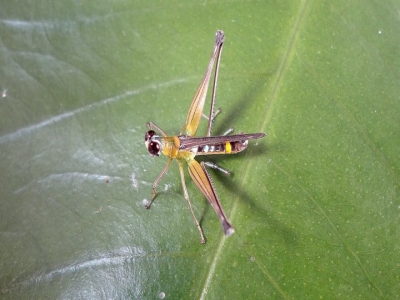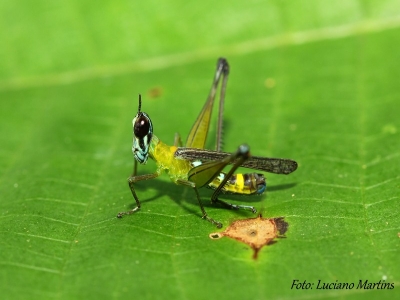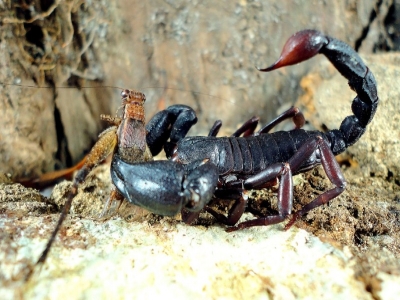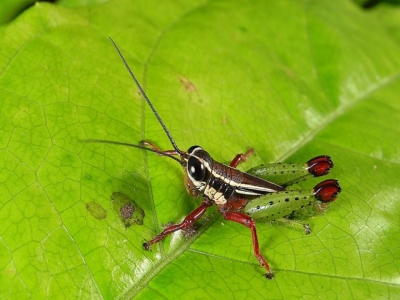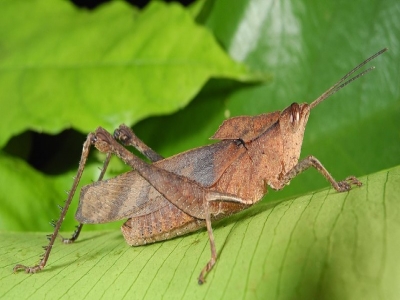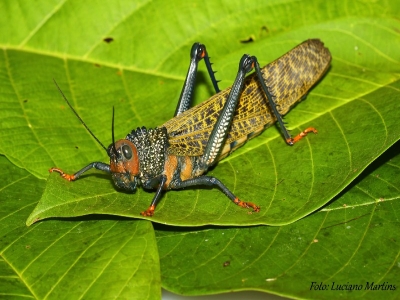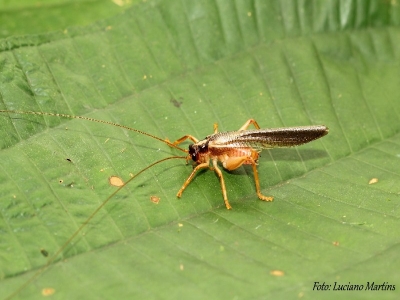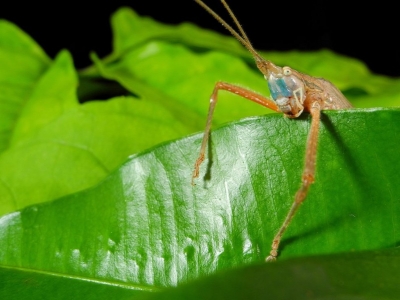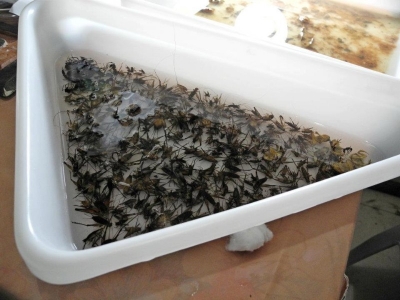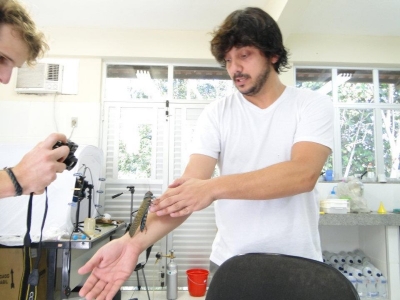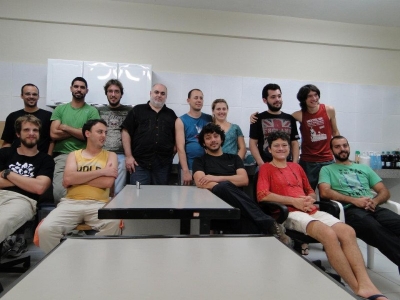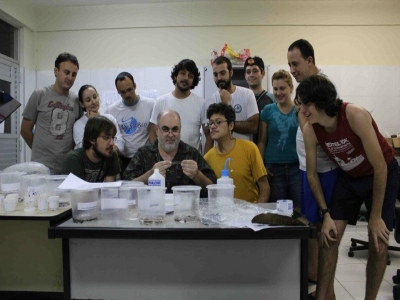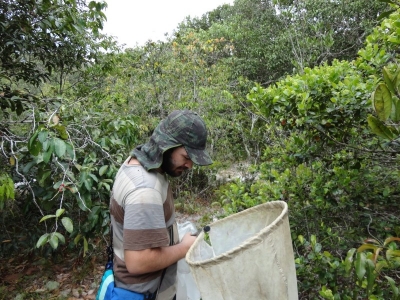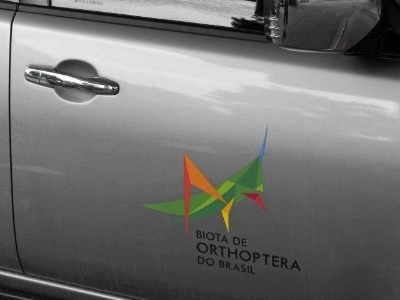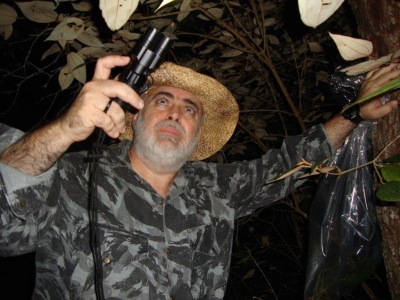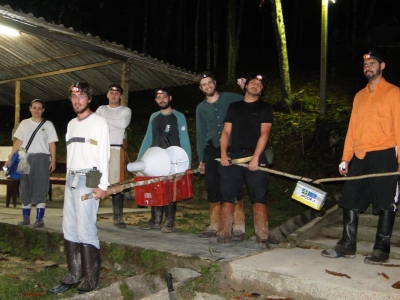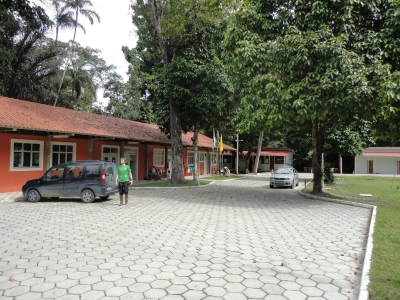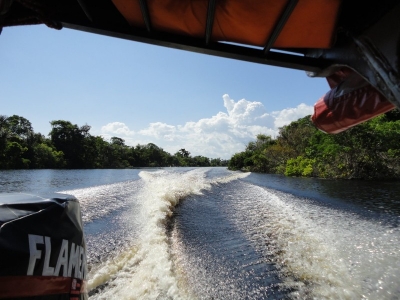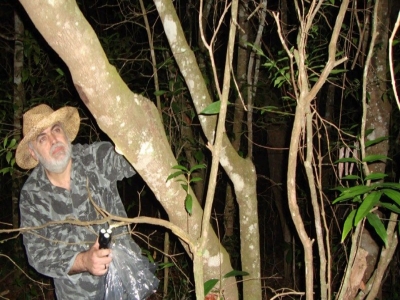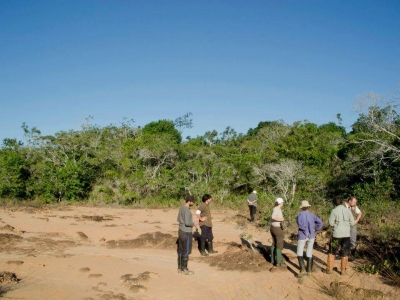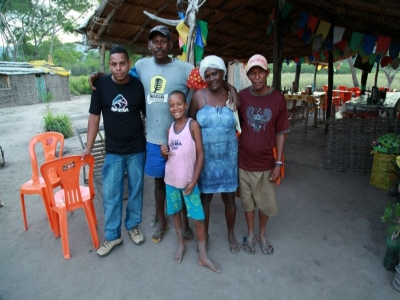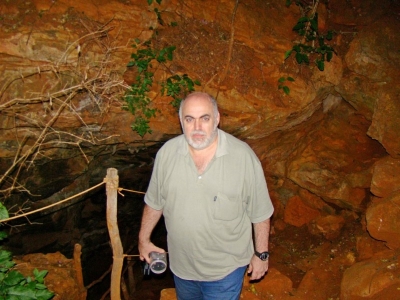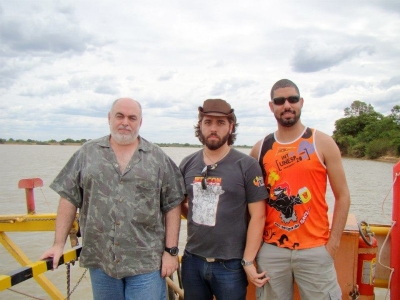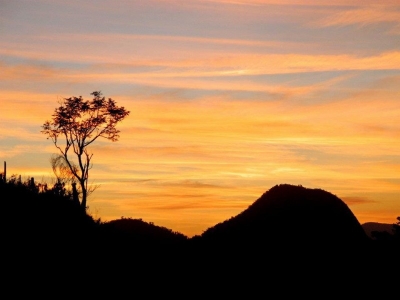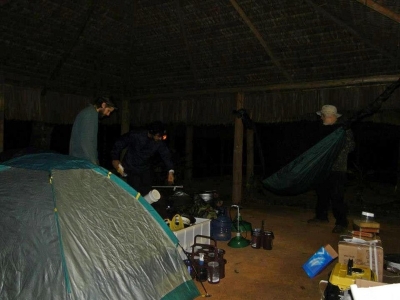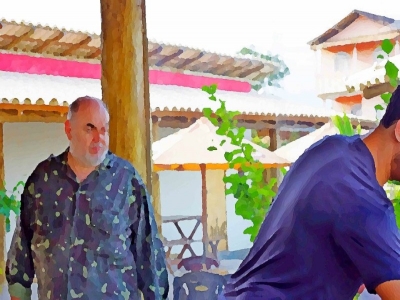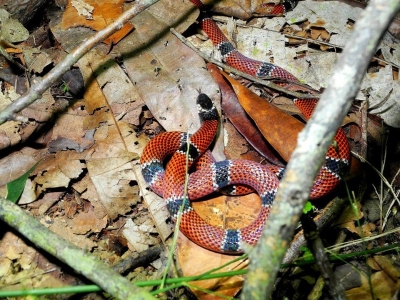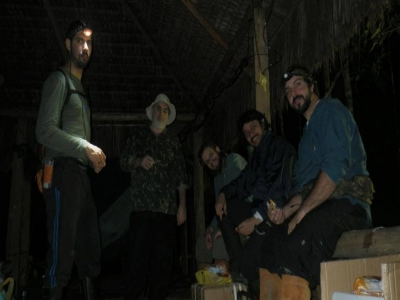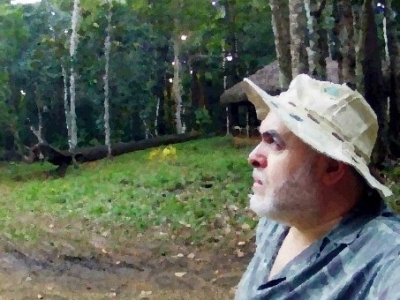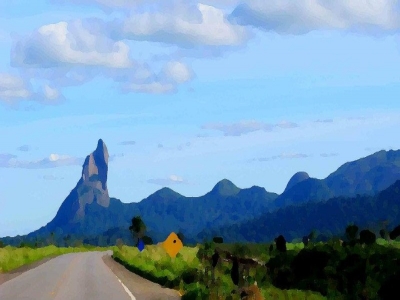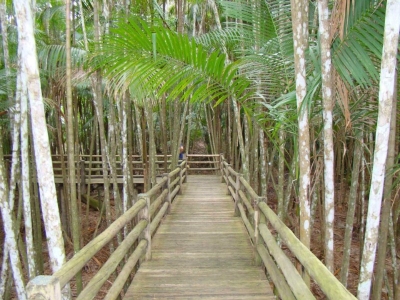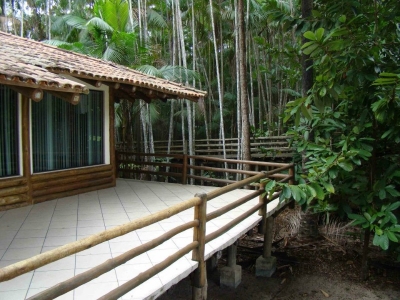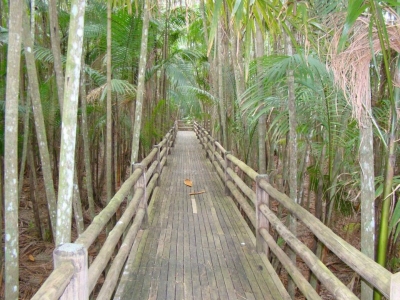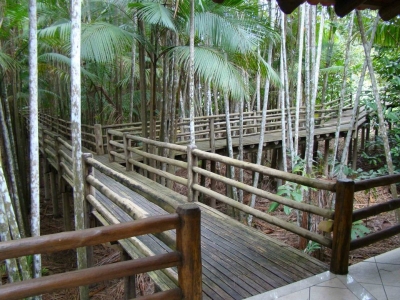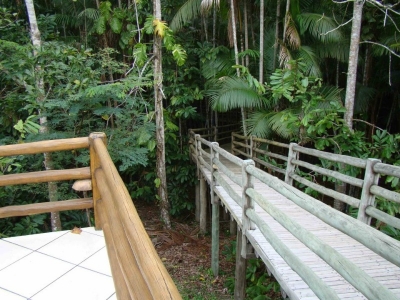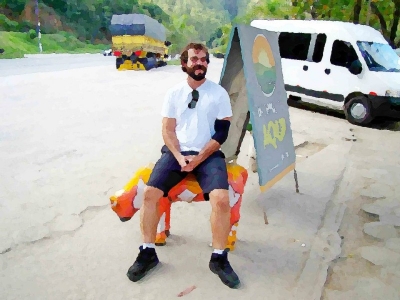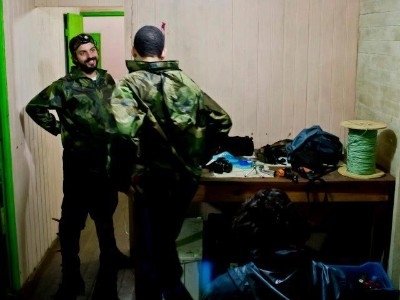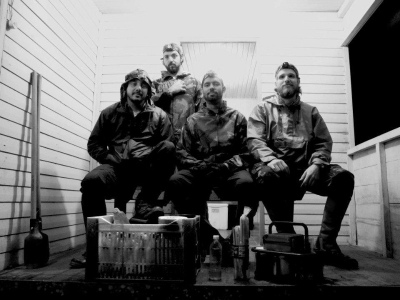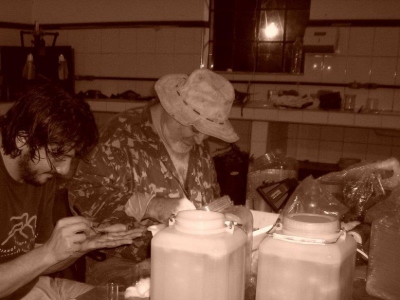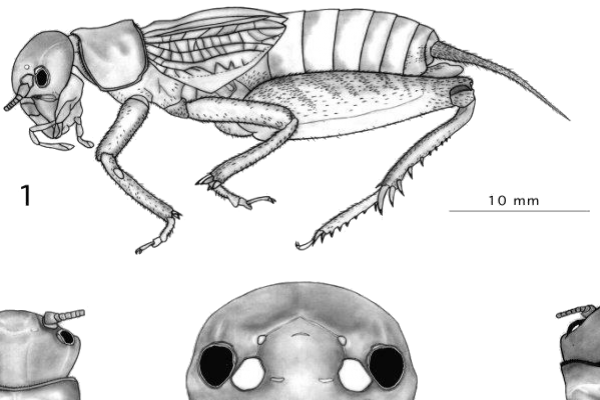Projetos 
Systematics and Biogeography of Orthoptera
DIVERSIDADE BIOLÓGICA, SISTEMÁTICA E GEOGRAFIA DA DIFERENCIAÇÃO DE ORTÓPTEROS NAS CHAPADAS DA DIAGONAL DE FORMAÇÕES ABERTAS E ÁREAS DAS FLORESTAS AMAZÔNICA E ATLÂNTICA DO BRASIL (ENSIFERA & CAELIFER
Coordenador: Francisco Assis Ganeo de Mello
BIOLOGICAL DIVERSITY, SYSTEMATICS AND DIFFERENTIATION GEOGRAPHY OF ORTHOPTERA IN THE PLATEAUS OF THE DIAGONAL AND OPEN AREAS OF THE AMAZON AND ATLANTIC FORESTS OF BRAZIL (ENSIFERA & CAELIFERA)
Coordinator: Francisco Assis Ganeo de Mello
In the Atlantic coastal forest, broadleaved, evergreen and humid, three essential centers of endemism are recognized: 1- "Pernambuco", covering the states of Pernambuco, Alagoas and Sergipe; 2- "Bahia - Espírito Santo", south of the previous one; 3- "São Paulo", which extends over a large swath of the São Paulo and south of Rio de Janeiro state.
In the Cerrado and Caatingas Domains, characterized mainly by open vegetation (xerophytic in the second), several forest enclaves are associated with discrete and punctual topographic elevations - usually on the top or slopes of plateaus inducing orographic moisture. Several cases of endemism in animals and plants are known at these points.
The Amazon Domain, in turn, is an archipelago with eight areas of endemism separated by the main rivers. These centers are Tapajós, Xingu Belém, Rondônia, Napo, Imeri, Guyana and Inambari.
Biological Systematics contributes to the Biota de Orthoptera do Brasil project in taxonomic knowledge of Ensifera and Caelifera suborders, the origin of endemic taxa in South America, their diversity, and spatial distribution. This subproject will move from the most basic taxonomic information to the synthesis of biogeographic-evolutionary knowledge through an analytical phase that will involve the formal study of the body morphology of organisms. Moreover, we will also use less conventional sources of information but excellent heuristic value: bioacoustics and cytogenetics. To be developed in fine tune with the subproject "Phylogeny and Molecular Identification in Orthoptera" under the coordination of a specialist in molecular methods to form the solid general project that deals with the evolutionary aspects of taxa.
The subproject aims to describe and map the biological diversity of the two Orthoptera suborders in critical endemic zones or potentially promising areas for finding locally endemic species. The specific objectives are:
- Carry out an inventory of the fauna of the two suborders of Orthoptera at different topography, rainfall and/or vegetation cover points within several biomes recognized by IBGE for Brazil;
- Verify the occurrence of localized endemisms and prepare systematic and biogeographic projects of endemism;
- Conduct studies in bioacoustics and build a sound archive of Ensifera species;
- Carry out karyotype studies as a source of taxonomic information and incorporate chromosome photographs into the image bank;
- Conduct comparative morphology studies;
- Evaluate structures that taxonomists have little addressed with a view to their use as a source of taxonomic and phylogenetic information (e.g., female genitalia and internal valves of the ensiferous ovipositor, sclerotized denticles of the proventriculus, male genitalia of Tettigonioidea and Stenopelmatoidea);
- Publish catalogs of Orthoptera species for each of the sampled points, to disseminate data on local biological diversity to the scientific community;
- Describe new taxa and develop identification keys for taxonomic categories;
- Assemble well-organized scientific collections;
- Assemble an image bank of species, body structures useful in identification, karyotypes, oscillograms and sonograms;
Provide taxonomic, biogeographic data, sound samples, and images for the “Orthoptera Species File” catalog, maintained by the Orthopterists’ Society.
The field activities will consist of active collections - day and night - and passive, with the use of ground traps (pitfalls) and light, photographing specimens, recording the stridulations, and fixation of material for chromosomal analysis.
The collected specimens will be deposited in the Orthoptera collection of the Zoology Department of the Biosciences Institute of the São Paulo State University "Júlio de Mesquita Filho" (UNESP) - Botucatu Campus. Holotypes, allotypes and part of the paratypes will be deposited in the insect collection of the Museum of Zoology at the University of São Paulo.
Mapas
Galeria de Imagens
